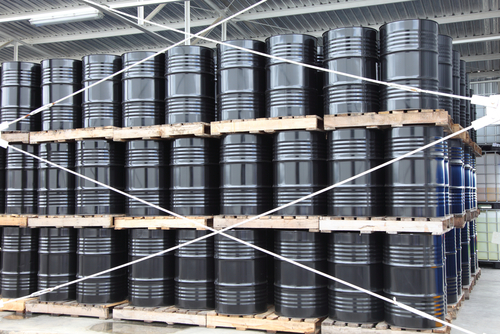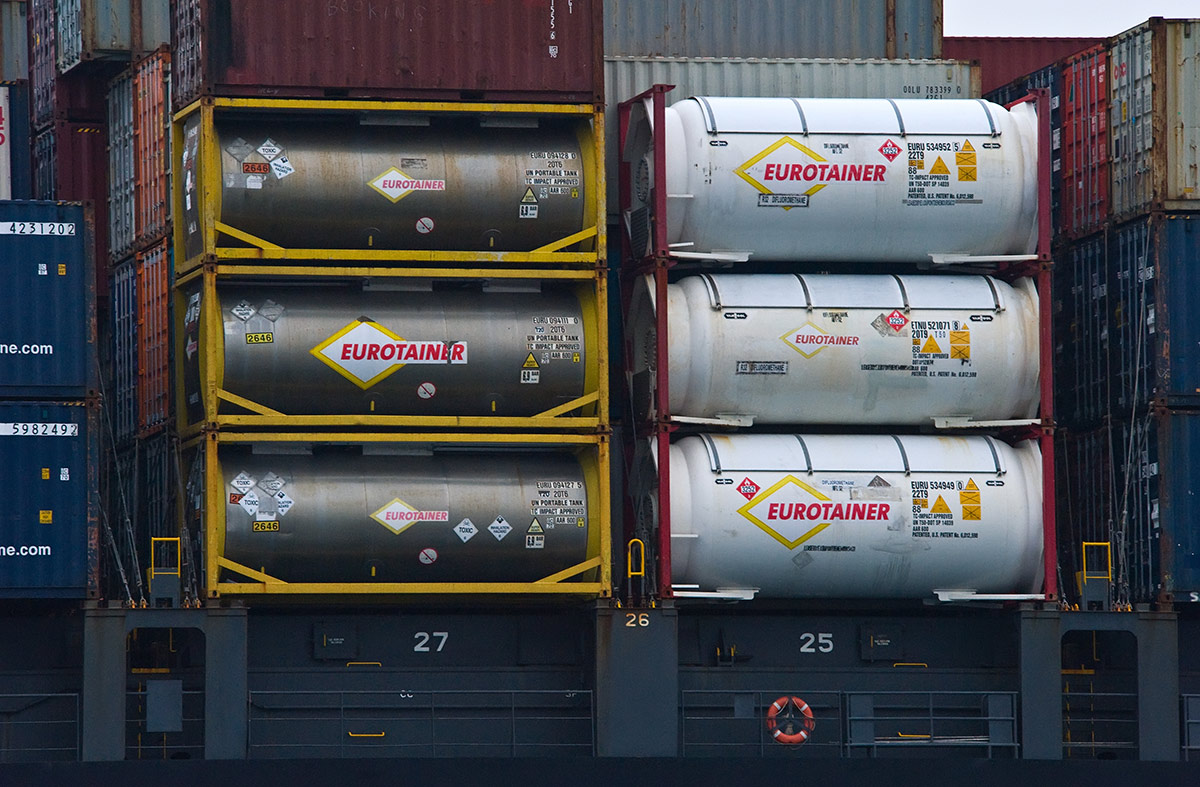The International Conference of Plastics Packaging Manufacturers, which establishes standards for IBC totes, has released great information on best practices to help you and your employees use these totes safely and effectively. Their brochure on IBC handling is aimed specifically at the European market, but its advice is sound for anyone handling IBC totes anywhere around the world.
Here, we’ll provide a quick breakdown of the brochure and how its contents can help you work with IBC totes more safely and efficiently.

Choosing Which Type of IBC Tote You Need
The International Organization for Standardization identifies two main types of IBC totes:
- Rigid IBCs are usually made of metal, wood or fiberboard and are designed as a complete, single-piece unit that requires no additional support when filled.
- Composite IBCs consist of a rigid cage that protects and supports the weight of a flexible inner liner; the two parts are considered to act and function as a single unit.
This article and brochure focus on advice and best practices for composite IBCs. A qualified IBC tote supplier, such as AirSea Containers, can assist you in determining what kind of IBC is right for your needs. Some common requirements include:
- An IBC tote intended to store products for human consumption must be classified as food-grade to prevent chemical interactions with the product.
- Liquids with low flashpoints (at or below 60ºC/140ºF) need to be stored in an explosion-protected IBC.
- Some filling materials will require a composite IBC with a permeation barrier if the material tends to diffuse through plastic under certain conditions.
For IBC totes used in hazmat transit, the filling material’s compatibility with the tote material should be tested. European and American tests will differ somewhat but will likely include testing against material breakdown, swelling and cracking. These tests will help determine which tote material is most suitable for your application. Make sure to allocate sufficient time for testing to take place; some of the required tests may take several months.

Best Practices for Filling and Handling IBC Totes
- Filling
- The guidebook recommends a three-step procedure for filling IBC totes:
- Ensure the outlet valve is closed.
- Fill at atmospheric pressure, not exceeding a temperature of 70ºC/158ºF. Pressurizing composite IBC totes is not recommended.
- Allow the inner receptacle to vent as it cools to prevent vacuum deformation. Then, screw the cap back into place and tighten it.
- The guidebook recommends a three-step procedure for filling IBC totes:
- Handling/Shipping
- When using a pallet jack or forklift to move IBC totes, always ensure the forks reach all the way underneath the pallet.
- Never attempt to move a composite IBC tote by attaching ropes to any part of it.
- Properly secure all IBC totes to prevent movement and damage during transit. See the brochure for a diagram of acceptable positioning of IBC totes in a shipping container.
- Storage/Stacking
- Check the U.N. marking on the tote’s identification plate for its stacking test load to ensure it can be safely stacked.
- Proper nesting is critical — always two on two, not one on three.
- During transport, only stack IBC totes two layers high.
- Emptying
- If possible, empty an IBC through its lower outlet valve.
- Before emptying, open the top lid and vent the tote to prevent vacuum collapse.
- If emptying the tote through a pipe or pump, make sure that it is independently supported and does not touch the cage. Using the cage to support a pipe or pump can cause vibrations that will damage the tote.
These guidelines are small but vitally important steps to optimizing your supply chain. Check out our blog articles for more IBC tote information and tips on how to get the most from your tote containers.
However, implementing best practices is only part of the picture. You also need a relationship with an IBC tote supplier that can provide you with the right service and the right selection.
IBC Tote Options from AirSea Containers
AirSea Containers is an industry leader in packaging solutions for both hazmat and non-hazmat shipping. We offer 275-gallon composite IBC totes at competitive prices, as well as tote accessories such as tilt tables. AirSea offers both food-grade and reconditioned totes, so you can get the functionality you need at the price you want.
Want to learn more about IBC’s tote selection? Need help figuring out what kind of tote is best for your applications? Call us at (866)-801-2581 or contact us online! Our packaging professionals will help you find the most efficient and cost-effective IBC tote solution.











